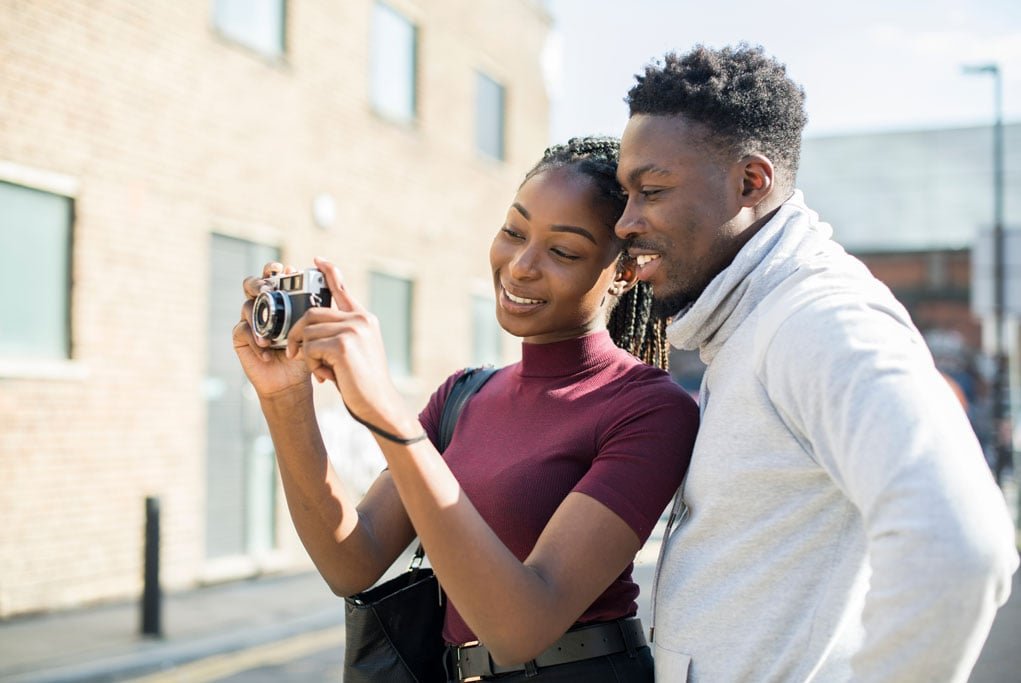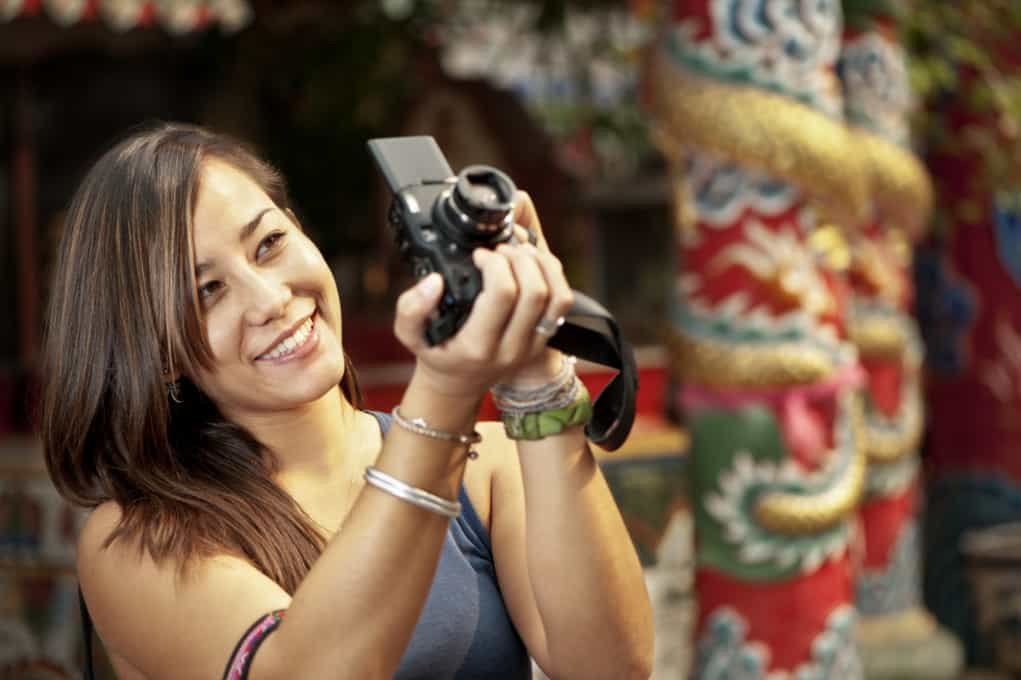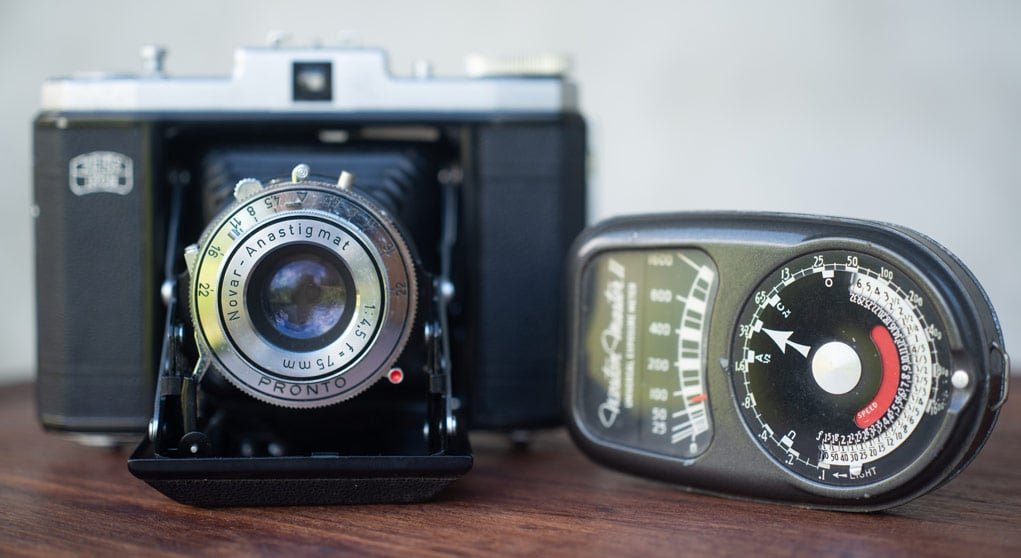How To Read A Camera Light Meter
Don't y'all detest information technology when your photos are too light or besides dark? This happens the calorie-free meter, likewise known as an exposure meter, has not been used well. If you enjoy using any car exposure style, you may not fifty-fifty be enlightened of how to apply a calorie-free meter in photography.
An accurate light meter volition help you or your photographic camera cull the optimal exposure settings. All digital cameras take an in-camera light meter. Handheld light meters are likewise an choice if working with older flick cameras that do non take light metering congenital-in. They are also used to measure out flash power when using strobe lighting.
Accurate lite readings are essential for setting a correct exposure. A correct exposure is the one that gets your photo looking how yous desire it to. Low-cal meters read the lite intensity. A camera'south low-cal meter in transmission mode will betoken when the exposure settings are correct or when you demand to adjust them. The exposure meter and camera work together to manage the exposure settings in an auto exposure mode.

How Do Exposure Meters Measure Light?
There are two types of low-cal meters and 2 types of lite: in-photographic camera and handheld. In-photographic camera calorie-free meters measure reflected light. Hand-held lite meters measure both reflected and incident light.
The reflected light is light that reflects off any surface. Incident lite is the light that hits a surface. The type of surface light reflected off will influence how a camera lite meter responds. Light reflecting off a low-cal, mid-tone, or night surface volition produce different readings with reflected light meters. Incident calorie-free metering is not affected by the color or tone of what you lot photograph. Incident metering can provide accurate measurement regardless of what you are photographing.
A handheld light meter tin can be an expensive and extra slice of photography equipment. These tend to be used mostly by photographers who need flash metering when they are using strobe lighting. I used to employ a handheld meter for studio work and when using flick. Now flash meters are not and so vital for my work as I know the output settings of my studio lights and tin can manage them without a dedicated flash meter.
Digital photography using flash is fabricated easier because the camera low-cal meter will communicate with the flash. Together they will calculate the exposure settings, flash range, and output. So when using a flash, you normally don't need a handheld light meter, peculiarly when using a dedicated flash that communicates with your camera.
Sometimes, a handheld light meter volition help reach exposure settings more than accurately in very low low-cal. In very flat, low light cogitating metering does not provide the nest camera settings.

Why is Light Metering Important?
Lite metering is important when you want to capture well-exposed images. What is considered to be well exposed is open to discussion. But, without using a calorie-free meter, near people will not consistently capture well-exposed photos.
Occasionally I have met photographers who can assess the available light past looking at it. I am reasonably capable of doing it, just my lite meter is more than accurate. Light changes; it's not always the same.
In the morning, the middle of the mean solar day, and in the evenings, it'due south different. Before sunrise and after dusk, it's low and flat. Presently after sunrise and a fiddling prior to sunset, it'south softer than in the middle of the 24-hour interval. With cloudy skies, the brightness of the lite tin can vary, depending on the clouds.
The digital light sensor in your photographic camera is limited in the range of tone information technology tin capture in a unmarried exposure. If as well much calorie-free affects the sensor, the image is overexposed. When too lilliputian lite enters the camera, the image is underexposed. The correct balance of ISO, aperture, and shutter speed must be used to capture a well-exposed photo.

How Does the Light Meter Assist You Manage the Exposure Settings?
The light meter assists you in choosing the best discontinuity, ISO, and shutter speed combinations. In manual mode, the light meter displays a graphic that looks like this in most cameras.

The light meter digital display will read zippo when yous have set your ISO, shutter speed, and aperture well.
The photographic camera volition set the exposure controls partially or manage all iii in an auto-exposure style. Using shutter priority, you can set up the shutter speeds, and the camera will adjust the aperture according to the light meter. In aperture priority manner, you lot manage the aperture, and the camera sets the shutter speed automatically. With other modes, the camera adjusts all iii settings. These may vary from camera to photographic camera.
The shutter speed, discontinuity, and ISO settings yous chose besides accept an influence on other aspects of photography. Aperture affects the depth of field. Shutter speed affects any motion yous might capture. ISO affects the corporeality of digital noise in an image.

When the Light Meter Reads Zero is this Always the Best Exposure?
Reflective light reads differently to camera meters than to incident low-cal meters. A camera'southward metering system will read how much light enters the photographic camera after reflecting off elements in the frame. Nigh handheld light meters can read lite the same way an in-congenital lite meter evaluates incoming low-cal. A handheld light meter can likewise read the ambient light incidentally. It tin evaluate single or multiple light sources.
In high contrast, calorie-free exposure metering is more critical. Measuring light as it reflects off a dark or a light surface will produce different readings. An incident light meter reading will show a different result again. This depends somewhat on how the light is falling on a bailiwick and metering modes.
The angled calorie-free reflects off a discipline affects how even the all-time lite meter reads it. Hard light striking a field of study and reflecting into your lens can brand a shiny nighttime subject look white, depending on your exposure settings.

How Do Lite Metering Modes Touch Ambient Light Readings?
Your pick of metering modes has a direct upshot on your exposure settings. The main metering modes in cameras are:
- Middle-Weighted Metering
- Spot Metering
- Matrix Metering (in Nikon) / Evaluative Metering (in Catechism) / Multi (in Sony)

Photographic camera makers employ a multifariousness of names for the default internal camera light meter setting. This mode takes multiple readings from beyond the frame and provides the calorie-free meter with an averaged ambient light reading.
Spot metering is when the setting allows the light meter to merely read the lite from a very small office of the frame. In this mode, yous are reading the corporeality of lite reflecting off a very pocket-size expanse.
Regardless of the lite source, an averaged reading produces a similar result to a handheld calorie-free meter that'south making an incident light reading. This is the default mode for nigh digital photography. It generally produces acceptable results regardless of the amount of calorie-free coming into the photographic camera lens.
Spot meters are used to make a very precise reading of reflected light. Taking photos in hard low-cal using a spot meter is very helpful in determining the best exposure. It'southward essential to use a spot meter when making use of the Zone Organisation. A handheld low-cal meter unremarkably comes with spot meters.

Center-weighted light meters are former and used to be the simply pick in many cameras. This was long before digital photography. This metering fashion is useful for reading the corporeality of lite when your main bailiwick fills the eye of your frame.
The best calorie-free meters in cameras ofttimes include other metering modes. The three I have covered hither are the nearly common modes on in-photographic camera calorie-free meters.
What is the Almost Important Aspect of Using a Light Meter in Photography?
A built-in low-cal meter works past reading the calorie-free falling on a subject that reflects into the camera lens. The amount of this cogitating light depends on the light source and the surfaces information technology reflects off.
You may wonder how calorie-free metering can accurately read reflective light if the surface tone has such influence. A light meter works on the premise that everything calorie-free reflects off is xviii% gray. This is the tone halfway between black and white. Information technology'due south also known as heart grey. Calorie-free falling on any other tone produces inaccurate light metering.
Because light meters are calibrated in this manner, they are consistent in the readings they provide. But this also ways when you take a reading from a white subject field, it volition render equally eye gray. This is if yous set your exposure settings according to the light meter. When you take a light meter reading from an entirely blackness discipline, the same volition happen.

Does the Light Meter E'er Demand to Read Zero for a Good Exposure?
NO! The light meters exercise not e'er need to read nil to capture a well-exposed photograph. A skillful exposure depends a lot on the light, the bailiwick, and your intent.
In difficult calorie-free and in soft light, exposure meters reply differently. While photographing loftier and low contrast subjects, lite meters produce a diversity of readings. Having a adept understanding of the tone range and the light quality will aid you make better choices well-nigh exposing your photos.
A relatively low contrast scene in flat light will be well exposed when you conform exposure settings, then the lite meter reads nix. In a loftier dissimilarity scene with difficult low-cal, a zeroed reading might give you a disappointing event, depending on what your intent is for the photo.
Here's a brusque video that will assist you sympathise this amend:
Understanding the Zone Arrangement volition help you achieve more creative exposures. This system helps you sympathize the tone range and manage your exposure settings. You lot can read more most it here.
Best Light Meter for Photography
- Sekonic 50-308X-U Flashmate
- Gossen Digisix ii
- Sekonic 401-208 Twin Mate
- MedicoMeter LX1330B
- Kenko KFM-1100
What's the All-time Manner to Use a Light Meter?
I find the best way to utilize a low-cal meter is equally a guide. Use it to gain an understanding of the light and tone range in a scene. Then brand your own choices as to how you desire your exposures to await. This does take practice. Only when you get used to using a light meter in this manner, your photography can certainly become much more than creative.
You volition start to run across the low-cal and tone in dissimilar ways. You lot will realize that the photos yous accept do not all need to be exposed generically and look banal. This is what happens when you use averaged metering and an auto-exposure setting.
Take fourth dimension and experiment. Study how to do this well. In my 365 Days of Photography Form, I concentrate many of the lessons on teaching how to attain the best employ of your light meter.
Source: https://photographycourse.net/how-to-use-a-light-meter/
Posted by: reidgropen.blogspot.com

0 Response to "How To Read A Camera Light Meter"
Post a Comment